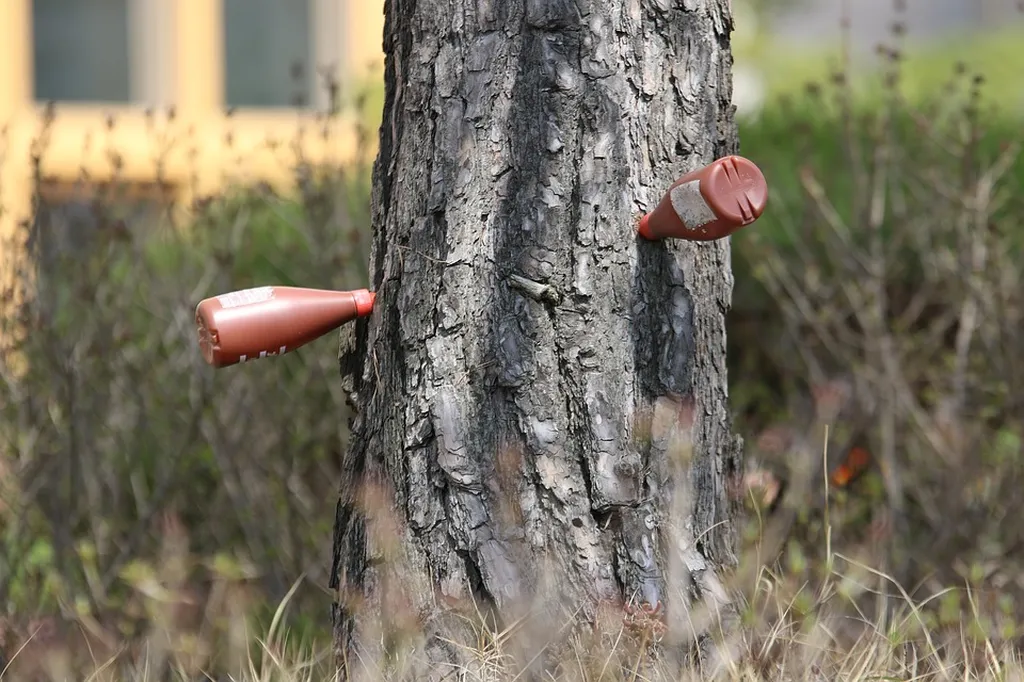In the heart of Italy, a revolutionary approach to tree care is taking root, promising to reshape the way we protect and nurture our arboreal companions. Dr. Alessandra Benigno, a researcher at the University of Florence’s Department of Agricultural, Food, Environmental and Forestry Science and Technology, has been at the forefront of this innovation, known as tree endotherapy or trunk injection. Her recent review, published in the journal ‘Plants’ (which translates to ‘Plants’ in English), offers a comprehensive look at this cutting-edge technique, highlighting its benefits and drawbacks, and its potential to transform sustainable tree protection.
Tree endotherapy involves the direct injection of treatments into the trunk of a tree, delivering nutrients, pesticides, or biological control agents straight into the xylem—the tree’s vascular system responsible for transporting water and nutrients. This method, Benigno explains, “offers a precise, targeted approach to tree care, minimizing waste and environmental impact.”
The benefits are substantial. Traditional methods of tree care often involve spraying pesticides or fertilizers, which can lead to runoff, drift, and exposure to non-target organisms. Endotherapy, on the other hand, delivers treatments directly into the tree, reducing the amount of active ingredient needed and minimizing environmental contamination. “With a very low consumption of the ‘active ingredient’, endotherapy has a negligible impact on the external environment,” Benigno notes, highlighting the technique’s potential to contribute to climate-smart agriculture and water resource conservation.
Moreover, the treatments are long-lasting, with efficacy ranging from 20% to 90% and persistence of up to two years. This longevity, coupled with the technique’s precision, makes it a promising tool for sustainable pest and disease management in both fruit and ornamental trees.
However, the technique is not without its challenges. Benigno’s review also highlights the biological and technical-operational obstacles that hinder its wider adoption. These include the need for specialized equipment and training, as well as the potential for injection sites to serve as entry points for pathogens.
Despite these hurdles, the potential of tree endotherapy is immense. As the world grapples with climate change and the need for sustainable agriculture, this innovative technique offers a promising solution for tree care and protection. It’s a testament to the power of precision agriculture and the potential of technology to reshape our relationship with the natural world.
In the energy sector, where trees play a crucial role in carbon sequestration and renewable energy production, the adoption of tree endotherapy could have significant commercial impacts. By enhancing tree health and longevity, this technique could boost the productivity and sustainability of energy crops, contributing to a greener, more resilient energy future.
As Benigno’s research shows, the future of tree care is here, and it’s looking increasingly sustainable. With further innovation and investment, tree endotherapy could become a cornerstone of climate-smart agriculture, helping to mitigate climate change and conserve our planet’s precious resources.

